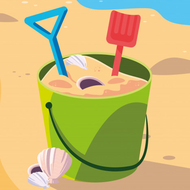
(View Complete Item Description)
Amazing Educational Resources is a nonprofit program that was initially created to facilitate free sharing of resources among teachers. The platform has since grown to an all-inclusive hub for educational materials. Amazing Educational Resources facilitates access to and sharing of free high -quality resources among teachers, parents and students.
Motivated by the passion to develop an accessible educational resources sharing hub, Nick Hoover, a professional with 14 years teaching experience, founded Amazing Educational Resources Facebook page. The platform has since grown from a Facebook page to a public website harboring over 1,000 resources and an online calendar of events with webinars, lessons, and classes.
Amazing Educational Resources believes there is power in sharing and value in the opinion of teachers and parents. We offer access to quality educational materials, facilitate live discussions about resources in the Facebook group, and hope to make the process of finding high quality resources a little bit easier.
We are focused on simplifying the process of accessing high quality resources for both teachers, parents, and students. We are geared towards providing a reliable platform for teachers and parents to coordinate their efforts in providing quality information and materials to guarantee the best education. A platform that is accessible and affordable to students of all backgrounds.
Material Type:
Activity/Lab,
Lecture Notes,
Lesson Plan,
Student Guide
Authors:
Nick Hoover,
Sonya Pryor-Jones




















